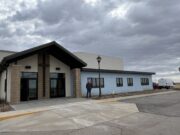Nebraska Extension Blog by Jenny Brhel
Planting Considerations: The warmer air, wind, and warming trend of soil temperatures are allowing for planting to begin. The winds have removed a great deal of surface moisture, making for dry conditions where seed will be placed. I recommend putting corn and soybeans in the ground at 2” (our research recommends 1.75” for soybean). This allows for buffered soil moisture and temperature conditions when planting. Bob Nielsen, emeritus professor at Purdue, said corn can be seeded 2.5-3” deep if that’s where uniform soil moisture is located in order to achieve uniform germination and emergence, particularly for non-irrigated fields. In the droughts of 2023 and 2024, we had farmers successfully plant corn at 3.5” deep just to be in uniform soil moisture. We don’t recommend planting soybeans deeper than 2.5”.
Seed germination occurs in two stages. The first is imbibition in which the seed takes up water quickly. Soybean needs to uptake 50% of its seed weight during this stage, and this typically occurs in less than 24 hours if the seed is placed into good soil moisture. Corn uptakes 35% of its seed weight which can occur in 48 hours when placed into good soil moisture. It’s this phase where we get concerned if we receive a cold rain or snow within 24-48 hours of planting, as the soil temperature can be reduced, the seed can imbibe cold water, leading to cold shock, reduced germination, and potentially death.
The second phase of germination is the osmotic phase. In this phase, a much slower uptake of water occurs. Seedlings in this phase are quite tolerant of soil temps as low as 35-40°F. Extended low temperatures and/or saturated excess moisture can lengthen the germination to emergence timeframe and can lead to greater soil-borne pathogens.
Agronomically we’ve come a long way with genetics and seed treatments. Because of this, some don’t worry about soil temps. Yet every year I think most agronomists would say we can trace various problems back to a specific planting date(s) or planting window. So, I still feel they’re an important consideration.
We often hear a preference of planting corn and soybeans in as close to 50°F or greater soil temperatures as possible. Below 50°F, I prefer to see corn planted on a warming trend of 5-7 days. The consideration is for soil temps in the mid-40’s on a warming trend with no chance of a cold snap (cold rain/snow) within 8-24 hours for soybean and 48 hours for corn. The time-frame is due to the imbibition (critical water uptake) time-frame for corn and soybean mentioned above. Soil temps for your field can be monitored by using a thermometer or checking out CropWatch soil temps at: https://cropwatch.unl.edu/soiltemperature.
Since 2004, we’ve shared the importance of planting soybeans early (mid-to-late April or first week of May) to increase yields. We’ve seen a shift to planting soybeans earlier than corn or at least at the same time as corn, which is encouraging to me. A question I have and that an increasing number of producers have, is around soybean seed treatments. With tight economics and reasons including impacts to pollinators, some growers have tested full seed treatments vs. a biological seed treatment vs. untreated seed. We have 6 site-years of data in York, Seward, Polk, and Hamilton Counties thus far showing no yield differences between these treatments. Planting dates ranged from May 2 to May 22. I’m hoping to have more studies on this topic in 2025. Please let me know if you’re interested in trying a few strips of untreated or biological treated soybeans compared to your treated seed so we can obtain more local data.




































